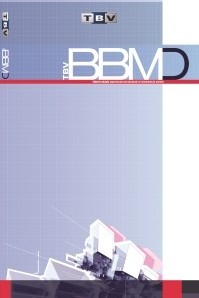Google n-gram Veritabanı ile Cinsiyet Kırılımlı Üzüntü ve Mutluluk Üzerine Duygu Analizi
Duygu çıkarımı, cinsiyete göre üzüntü ve mutluluk analizi, duygu tahmini, Google n-grams, duygu madenciliği
Sadness and Happiness Analysis Acording to Gender Using Google n-gram Database
___
- [1]. Michel, J. B et all, (2011). The Google Books Team, 176-182.
- [2]. Michel, J. B. et all, (2011). Quantitative analysis of culture using millions of digitized books. science, 331(6014), 176-182.
- [3]. Smallwood, C., (2015). The complete guide to using Google in libraries: instruction, administration, and staff productivity (Vol. 1). Rowman & Littlefield.
- [4]. Wang, H., Prendinger, H., & Igarashi, T. (2004, April). Communicating emotions in online chat using physiological sensors and animated text. In CHI'04 extended abstracts on Human factors in computing systems (pp. 1171-1174). ACM.
- [5]. Hunter, P. G., Schellenberg, E. G., & Schimmack, U. (2010). Feelings and perceptions of happiness and sadness induced by music: Similarities, differences, and mixed emotions. Psychology of Aesthetics, Creativity, and the Arts, 4(1), 47.
- [6]. Liu, Y., Sourina, O., & Nguyen, M. K. (2011). Real-time EEG-based emotion recognition and its applications. In Transactions on computational science XII (pp. 256-277). Springer, Berlin, Heidelberg.
- [7]. Bond, A., & Lader, M. (1974). The use of analogue scales in rating subjective feelings. British Journal of Medical Psychology, 47(3), 211-218.
- [8]. Zhe, X., & Boucouvalas, A. C. (2002, July). Text-to-emotion engine for real time internet communication. In Proceedings of International Symposium on Communication Systems, Networks and DSPs (pp. 164-168).
- [9]. Hancock, J. T., Landrigan, C., & Silver, C. (2007, April). Expressing emotion in text-based communication. In Proceedings of the SIGCHI conference on Human factors in computing systems (pp. 929-932). ACM.
- [10]. Kamvar, S. D., & Harris, J. (2011, February). We feel fine and searching the emotional web. In Proceedings of the fourth ACM international conference on Web search and data mining (pp. 117-126). ACM.
- [11]. Kaur, A., & Gupta, V. (2013). A survey on sentiment analysis and opinion mining techniques. Journal of Emerging Technologies in Web Intelligence, 5(4), 367-371.
- [12]. Klein, M., & Nelson, M. L. (2009, April). Correlation of term count and document frequency for Google n-grams. In European Conference on Information Retrieval (pp. 620-627). Springer, Berlin, Heidelberg.
- [13]. Pauls, A., & Klein, D. (2011, June). Faster and smaller n-gram language models. In Proceedings of the 49th Annual Meeting of the Association for Computational Linguistics: Human Language Technologies-Volume 1 pp. 258-267.
- [14]. Islam, A., Milios, E., & Keselj, V. (2012). Comparing Word Relatedness Measures Based on Google n grams. Proceedings of COLING 2012: Posters, 495-506.
- [15]. Islam, A., Milios, E., & Kešelj, V. (2012, May). Text similarity using google tri-grams. In Canadian Conference on Artificial Intelligence (pp. 312-317). Springer, Berlin, Heidelberg.
- [16]. Juola, P. (2013). Using the Google N-Gram corpus to measure cultural complexity. Literary and linguistic computing, 28(4), 668-675.
- [17]. Joubarne, C., & Inkpen, D. (2011, May). Comparison of semantic similarity for different languages using the Google N-gram corpus and second-order co-occurrence measures. In Canadian Conference on Artificial Intelligence (pp. 216-221). Springer, Berlin, Heidelberg.
- [18]. Davies, M. (2014). Making Google Books n-grams useful for a wide range of research on language change. International Journal of Corpus Linguistics, 19(3), 401-416.
- ISSN: 1305-8991
- Başlangıç: 2005
- Yayıncı: Türkiye Bilişim Vakfı
Canberk ARDIÇ, Mehmet Arif Emre ŞEN, Mehmet KARAKOÇ
Google n-gram Veritabanı ile Cinsiyet Kırılımlı Üzüntü ve Mutluluk Üzerine Duygu Analizi
Küme Bilgisayarlara Görev Ataması
Mustafa Haluk AKGÜNDÜZ, Eşref ADALI
İş Sağlığı ve Güvenliği Sektöründe Bayes Ağları Uygulaması
Zinnet Duygu AKŞEHİR, Ebru PEKEL, Sedat AKLEYLEK, Erdal KILIÇ, Yalçın ORUÇ
